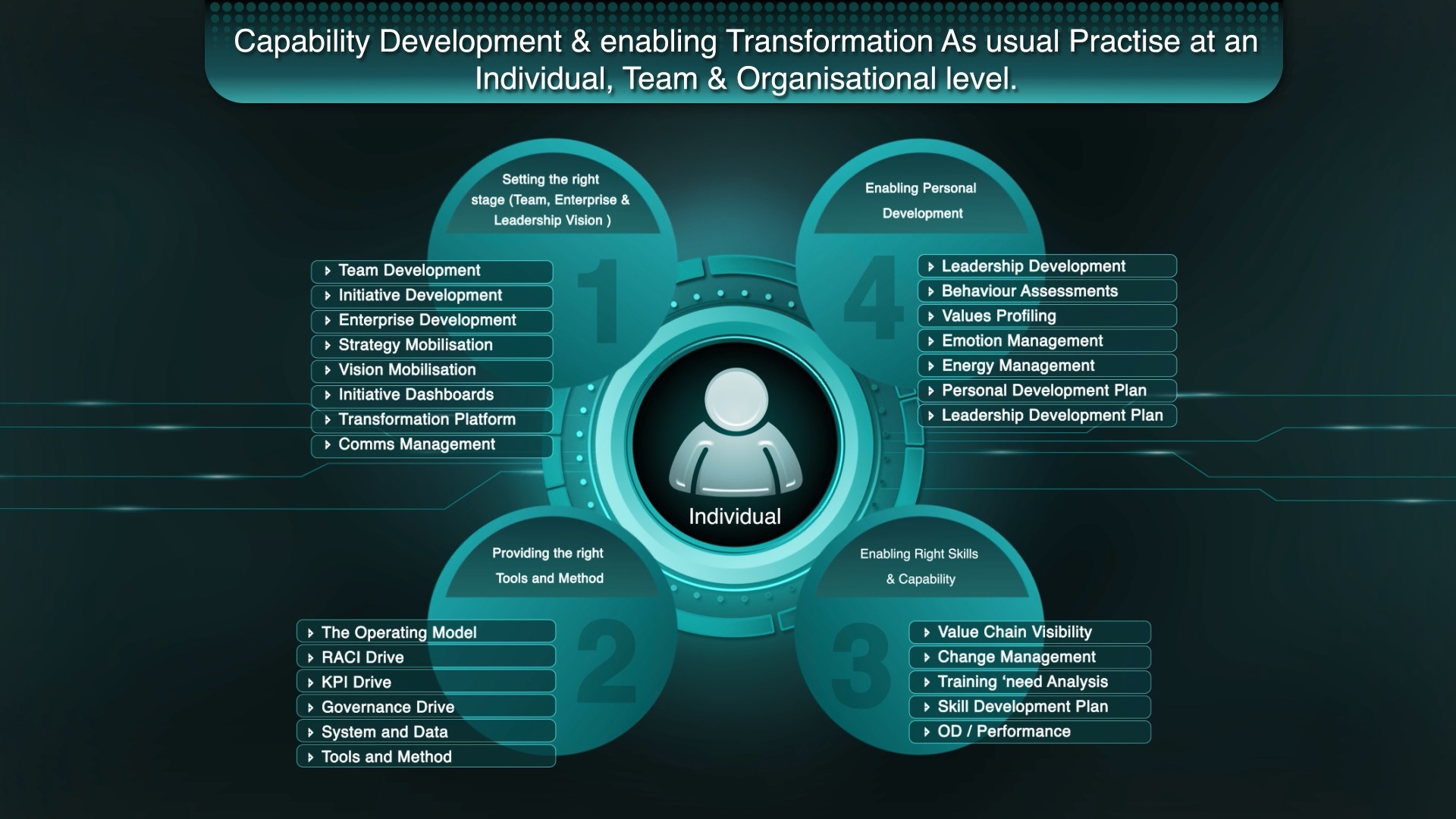Healthcare – Enterprise Business Transformation
An Introduction To Our Healthcare Platform
Modus Business Transformation Core Modules
Building, Driving and Sustaining your Business Transformation and embedding a 'Transformation As Usual' platform.
01 - Business Model Management - Manage and Adapt
Empower your healthcare enterprise to navigate and excel in a complex landscape with the Business Model Management Hub. Embrace change, drive innovation, and achieve sustainable growth.
Key Features:
• Business Model Management: Design, implement, and refine business
models that drive success.
• Business Transformation Survey: Regularly assess your organization’s
readiness for change and identify areas for improvement.
• Transformation Strategy Hub: Develop and execute comprehensive
transformation strategies that align with your business goals.
Importance:
• Comprehensive Analysis: Evaluate your current and future business models,
considering key aspects such as markets, customers, products, and
services.
• Strategic Alignment: Align your business models with strategic goals to
ensure every operational decision supports your overarching vision.
• Adaptability: Quickly adapt to market changes, regulatory shifts, and
emerging trends, ensuring your healthcare enterprise remains competitive
and compliant.
• Enhanced Decision-Making: Utilize data-driven insights to make informed
decisions, minimizing risks and maximizing opportunities.
• Transformation Readiness: Prepare your organization for transformative
initiatives by identifying potential areas for improvement and innovation.
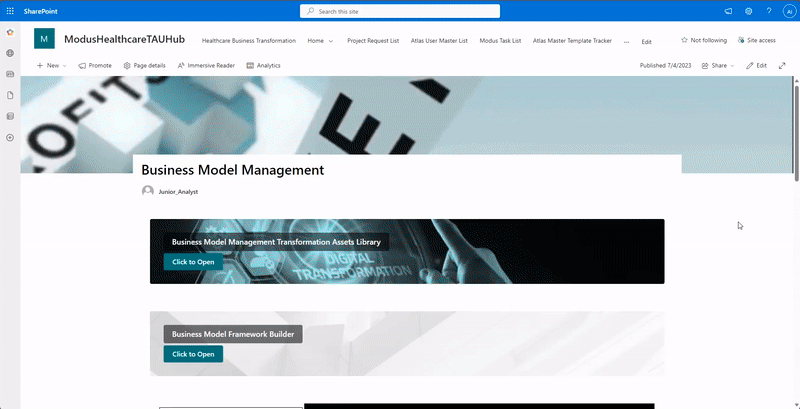
Benefits:
• Operational Efficiency: Streamlining workflows and optimizing resource
allocation can significantly reduce operational inefficiencies, leading to better
patient care and cost savings.
• Enhanced Decision-Making: A structured business model helps in making
data-driven decisions, aligning healthcare operations with patient outcomes,
regulatory compliance, and cost management.
• Improved Service Delivery: Managing the business model ensures that
services are aligned with patient needs, leading to improved care quality,
patient satisfaction, and the potential for personalized care.
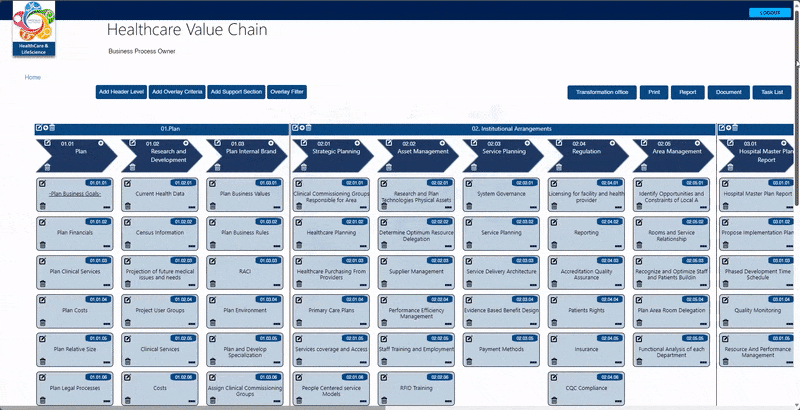
Benefits:
• Improved Patient Care: By optimizing each step in the healthcare value
chain, from patient intake to post-treatment care, providers can ensure better
coordination, reducing delays and improving overall patient outcomes.
• Cost Reduction: Streamlining processes within the value chain helps to
eliminate inefficiencies, reducing unnecessary tests, procedures, and
administrative costs while maintaining high-quality care.
• Enhanced Collaboration: Value chain management fosters better
collaboration between different departments (clinical, administrative, and
supply chain), ensuring that resources are allocated effectively and patient
care is seamless.
02 - The Value Chain Modeler - Manage and Adapt
Leverage the Value Chain Modeler to enhance your operational efficiency, drive innovation, and achieve sustainable growth in the healthcare sector.
Key Features:
• Value Chain Analysis: In-depth analysis of each component of your value
chain to optimize performance.
• Value Chain Surveys: Collect valuable insights from stakeholders to inform
strategic decisions.
• Target Operating Model: Develop and implement a target operating model
that aligns with your business objectives.
Importance:
• Comprehensive Understanding: Gain a holistic view of your entire business
model and its touch points across the end-to-end value chain.
• Enhanced Articulation: Clearly articulate and illustrate each component of
your value chain, ensuring all stakeholders understand the operational flow.
• Strategic Planning: Develop detailed plans for business growth by identifying
key areas for improvement and innovation.
• Operational Efficiency: Streamline processes to enhance efficiency, reduce
costs, and improve patient care outcomes.
03 - The Operating Model - Organize and Sustain
Empower your healthcare enterprise with the Operating Model to achieve organized, sustainable, and efficient operations.
Key Features:
• TOM and Operating Model Design: Create and manage target operating
models tailored to your strategic objectives.
• Operating Model Components: Define and integrate essential components
of your operating model.
• Product and Services Value System Design: Design systems that enhance
the value of your products and services.
• Customer Experience Design (CX): Focus on patient-centric approaches to
improve customer experiences.
• Business Role and Skill-Based Design: Develop roles and skills that align
with your operational needs.
• Process Support Office: Provide support and governance for all operational
processes.
Importance:
• Comprehensive Organization: Define, capture, and visualize all operational
processes and activities within your healthcare organization.
• Living Process Knowledge Hub: Maintain a dynamic 'Ways Of Working
Centre Of Excellence' to continuously update and share best practices.
• Adaptability: Quickly adapt to industry changes and regulatory requirements,
ensuring compliance and efficiency.
• Enhanced Training: Use multiple operating models as ongoing training
guides to up-skill your workforce and maintain high standards.
• Improved Customer Experience: Design and implement strategies that
enhance patient care and satisfaction.
• Strategic Alignment: Ensure your operations align with business goals and
patient needs, driving overall success.
• Efficiency and Excellence: Streamline processes and eliminate
inefficiencies, leading to improved service delivery and operational
excellence.
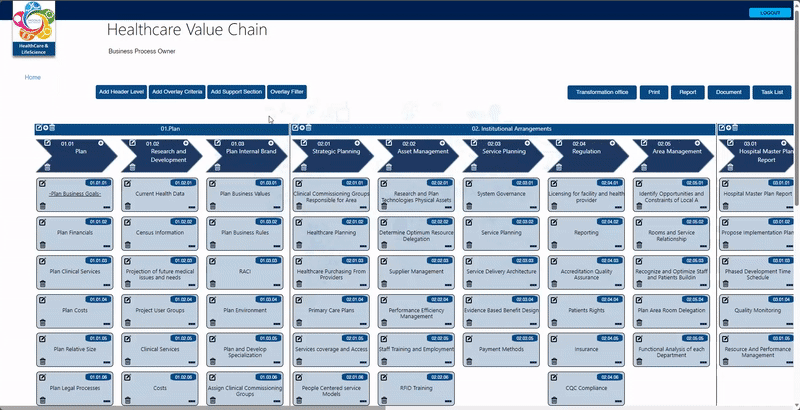
Benefits:
• Enhanced Efficiency: Streamlines patient care, administrative tasks, and
resource management, improving overall coordination.
• Better Patient Outcomes: Aligns care activities with healthcare goals for
timely, effective interventions.
• Agility: Enables quick adaptation to regulatory, technological, or patient care
changes.
• Cost Control: Integrates financial management with service delivery,
balancing costs and quality care.
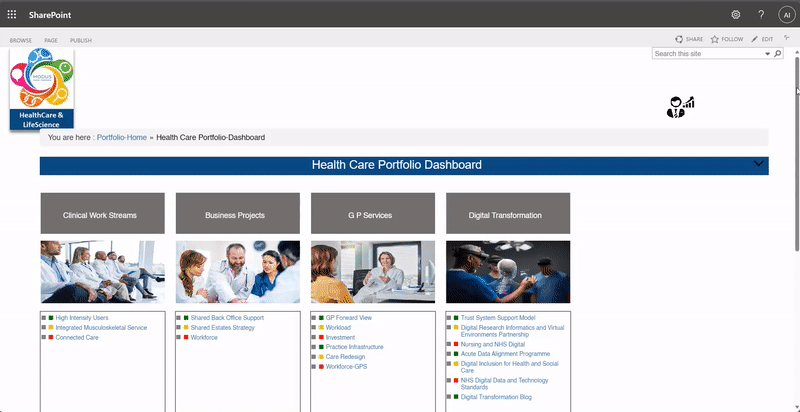
Click To Open
Benefits:
• Streamlined Processes: Pre-built templates and methodologies accelerate
transformation efforts.
• Improved Decision-Making: Access to data and tools helps in making
informed, strategic decisions.
• Consistency: Standardized assets ensure uniformity in transformation
across departments. Flexibility: Customizable assets allow adaptation to
specific organizational needs and goals.
04 - The Transformation Assets and Portfolio Module - Discover and Transform
Empower your healthcare enterprise to discover and transform with the comprehensive and connected capabilities of the Transformation Assets and Portfolio Module.
Key Features:
• Portfolio Management Office: Oversee and manage your entire
transformation portfolio.
• Pillar/Initiative Management Office: Focus on specific pillars or initiatives
within your transformation strategy.
• Program Management Office: Manage large-scale transformation
programs with precision.
• Project Management Office: Ensure successful delivery of individual
projects.
• Project Support Office (or Virtual PMO): Provide support and governance for
project execution.
Importance:
• Comprehensive Library: Access a vast library of pre-defined templates and
methods to streamline your transformation process.
• Centralized Management: Manage all aspects of your transformation from a
single, centralized platform.
• Efficient Execution: Ensure seamless execution of transformation initiatives
with robust planning and management tools.
• Enhanced Collaboration: Foster collaboration across teams with connected
transformation assets and integrated management offices.
• Value Chain Analysis
• Business Model Analysis
• Transformation Strategy
• Transformation Mobilization
• Planning Management
• Transformation Log Management
• Financial Management
• Communication Management
• Operating Model Management
• Process Design Management
• IT Design Management
• Build and Test Management
• Implementation Management
• Change Management
• Personal Development Assessments
• Training Management
• Organizational Design Management
• Transformation Review
• Optimization and Governance
05 - Organizational Change Management - Unite and Thrive
Unite and thrive with the Organizational Change Management module, empowering your healthcare enterprise to fully embrace and sustain transformational change.
Key Features:
• Change Management Office: Oversee and manage all change initiatives.
• Comms Management Office: Ensure effective communication throughout the
change process.
• Organizational Design Management Office: Design and manage
organizational structures to support transformation.
• Leadership Development Practices: Develop leaders who can drive and
sustain change.
• Change Workbench: Access tools and resources to facilitate change
management.
• Adoption and Course Correct: Monitor adoption rates and make necessary
adjustments.
• Training and Launch Academy: Provide training and support to ensure
successful implementation.
Importance:
• Full Adoption of Change: Ensure complete adoption of transformation
initiatives across your organization.
• Engaged Workforce: Engage employees and build organizational structures
that support change.
• Skill Development: Develop pathways and skills tailored to individual roles
and resources.
• Leadership Growth: Foster leadership development to guide and sustain
change efforts.
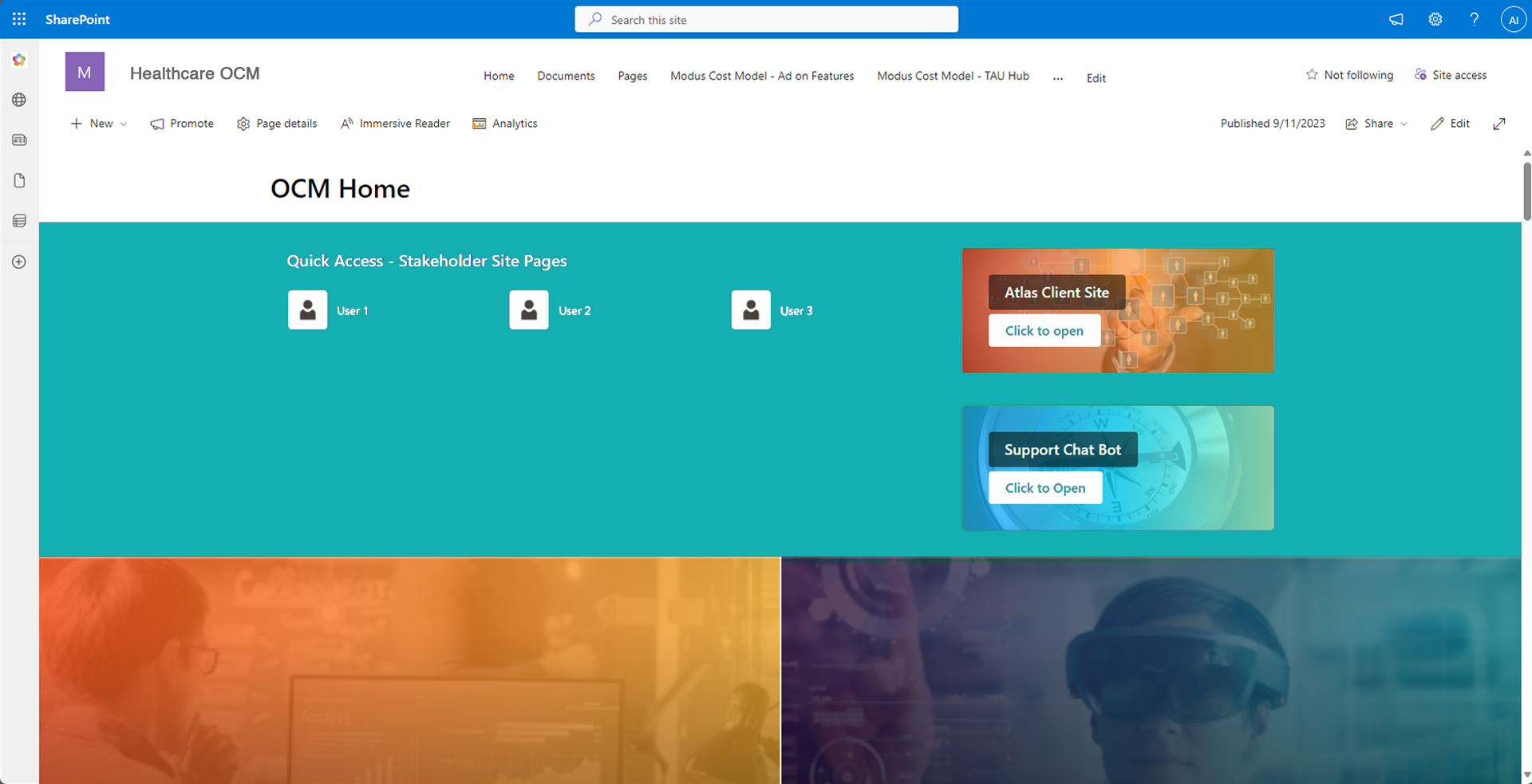
Benefits:
• Smooth Adoption: Facilitates seamless integration of new processes,
minimizing disruptions.
• Enhanced Staff Engagement: Improves employee buy-in through clear
communication and training.
• Reduced Resistance: Manages change effectively, lowering resistance and
promoting positive adaptation.
• Sustained Change: Ensures long-term success by embedding
transformation into the organization’s culture.
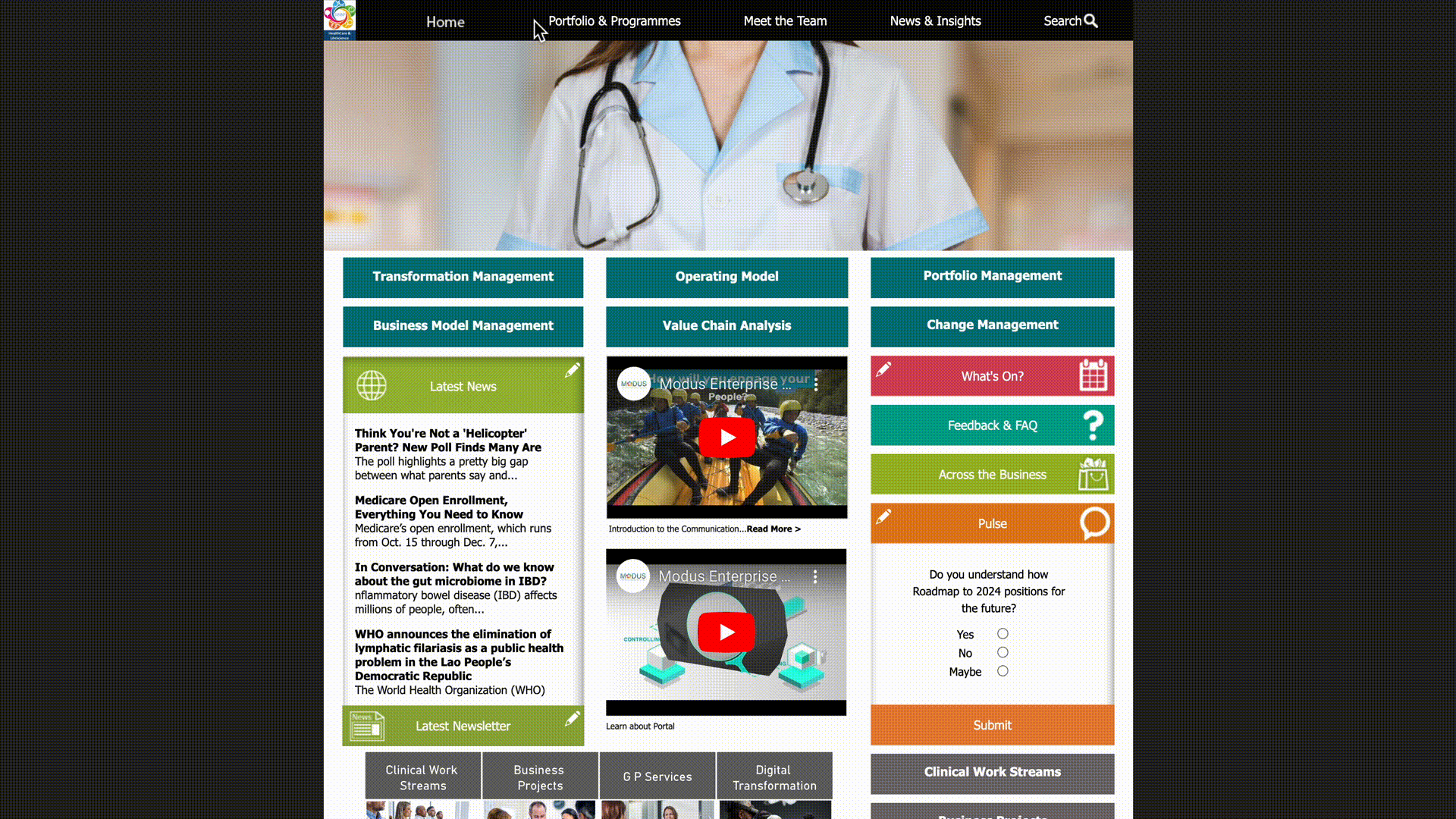
Click To Open
Benefits:
• Centralized Access: Provides a unified platform for all healthcare
stakeholders to access transformation updates.
• Improved Collaboration: Enhances teamwork and communication across
departments and locations.
• Real-Time Updates: Ensures timely information sharing for smoother project
execution.
• Boosted Engagement: Keeps staff and partners informed, increasing
involvement in transformation efforts.
06 - Engagement Hub - Share and Guide
Empower your healthcare enterprise to share and guide effectively with the Engagement Hub, ensuring seamless communication and collaboration throughout your transformation journey.
Key Features:
• Centralize Transformation Comms: Streamline and manage all
communication related to transformation.
• Latest News: Provide real-time updates and news to keep everyone
informed.
• Poll Surveys: Conduct surveys to collect valuable feedback and insights.
Transformation Team Areas: Designated spaces for transformation teams to
collaborate.
• Business Team Areas: Separate areas for business teams to coordinate and
share updates.
Importance:
• Centralized Communications: Manage all transformation communications
from a single platform, ensuring consistent and clear messaging.
• Latest News Updates: Keep your team informed with the latest news and
updates related to the transformation.
• Interactive Poll Surveys: Gather feedback and insights through regular poll
surveys to inform decision-making.
• Dedicated Team Areas: Create specific areas for transformation and
business teams to collaborate and share information.
• Comprehensive Calendar Roadmaps: Visualize and track key milestones
and deadlines with integrated calendar roadmaps.
Transformation As Usual Capability Model
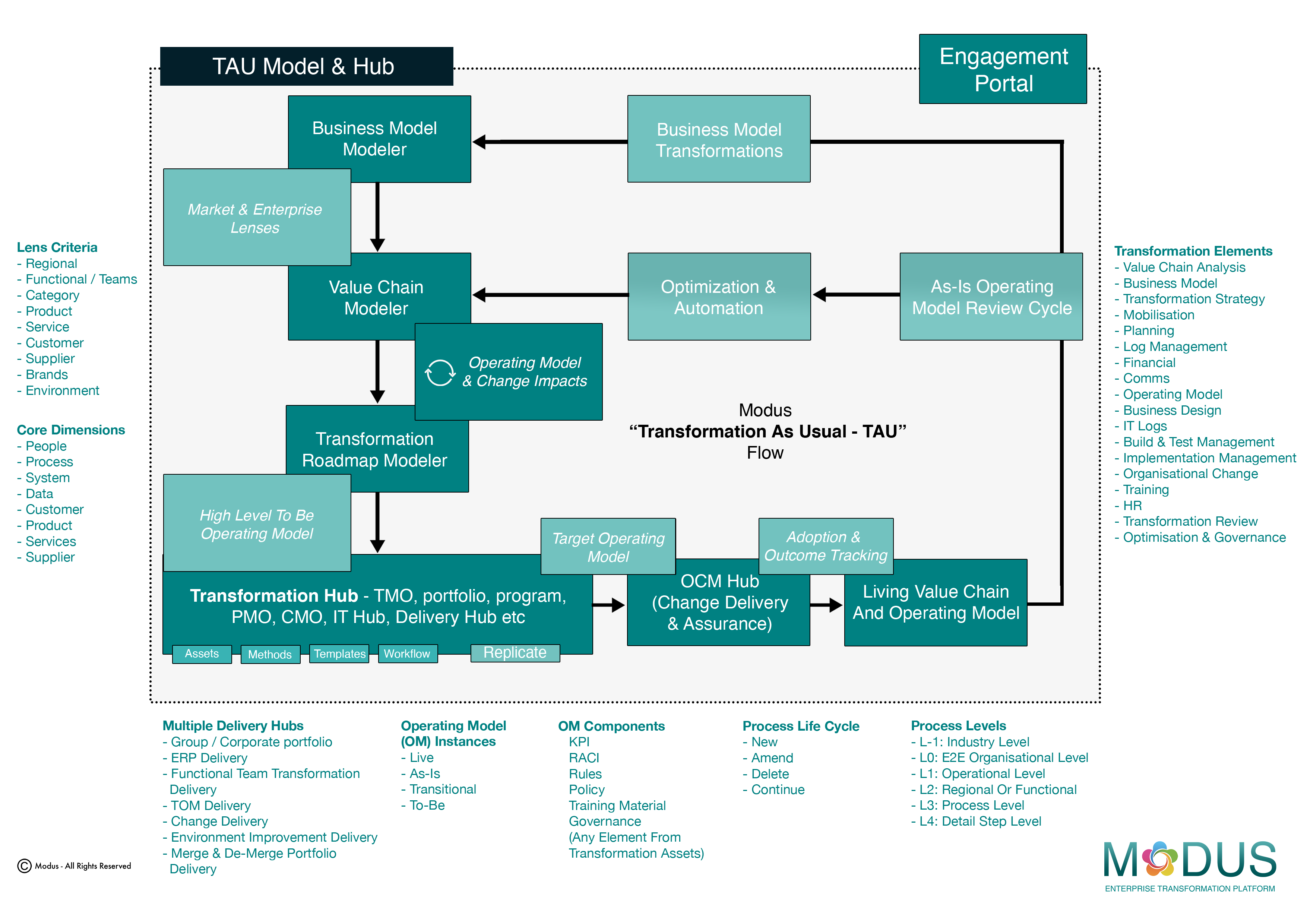
Individual and Team Capability Development
